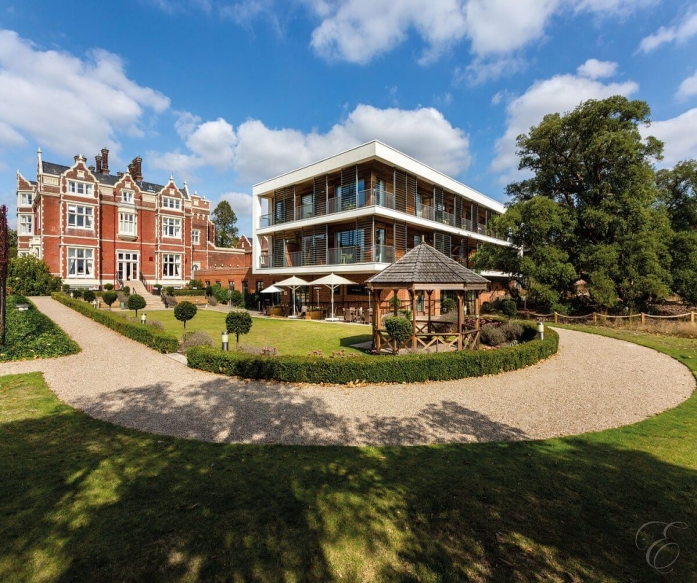Building hospitals in the modern era goes far beyond bricks and mortar. Today’s healthcare environments must be designed for efficiency, resilience, and patient wellbeing. That’s where New build contractors bring real value—delivering complex hospital construction projects that align with the latest safety regulations and accessibility mandates. These purpose-built facilities are created to improve outcomes for both patients and staff, blending advanced technology, infection control, and user-friendly layouts into every phase of the project.
As health services evolve, so must the infrastructure that supports them. From multi-specialty hospitals to community clinics, the design and build process must ensure compliance with stringent NHS and building codes, while also being flexible enough to accommodate future medical innovations. Construction is no longer just about what meets the eye—it's about creating a safe, inclusive environment that sustains excellence in care delivery.
Meeting UK Safety Regulations in Hospital Design
In any hospital project, safety is paramount. From fire prevention systems to structural integrity, hospital buildings are subject to some of the most rigorous regulations in the UK construction industry. A key part of meeting these standards is the early-stage design process, where safety measures are integrated into every structural and operational detail.
Modern hospital designs incorporate features like fire-rated doors, smoke extraction systems, automatic sprinkler installations, and safe evacuation routes. Materials used in construction are often antimicrobial and low-VOC to maintain indoor air quality, further enhancing safety for immunocompromised patients and staff alike.
Equally crucial is compliance with the Health Technical Memoranda (HTMs) and Health Building Notes (HBNs), which guide the safe and efficient design of healthcare environments. Failure to meet these standards can delay approvals and increase project costs, making it essential to partner with specialists who understand the regulatory landscape from planning to delivery.
Accessibility at the Heart of Healthcare Construction
Today’s hospitals must cater to the needs of all individuals—regardless of age, mobility, or cognitive ability. Accessibility is no longer optional; it is a legal and ethical obligation. Ramps, handrails, braille signage, acoustic considerations, and adjustable-height fixtures are now a standard part of hospital construction.
Universal design principles are integrated into everything from entranceways and car parks to patient wards and consultation rooms. This not only ensures compliance with the Equality Act 2010 but also fosters a sense of dignity and independence for all who enter the facility.
Inclusive design goes beyond physical access. Sensory-friendly spaces and quiet zones are becoming more common, especially in mental health and paediatric settings. Ensuring wayfinding is intuitive and that interiors are both calming and practical further supports accessibility for people with neurodiverse conditions.
Why Choose Specialist Healthcare Builders?
Working with New Build Healthcare Contractors means engaging a team with deep insight into the specific needs of hospital construction. These professionals are well-versed in the lifecycle of healthcare builds—from feasibility and design to construction and commissioning.
They understand that building a hospital is not just about construction—it’s about delivering a fully functional, compliant healthcare environment. This includes everything from operating theatres with ultra-clean ventilation to isolation rooms with negative pressure systems, all tailored to NHS guidelines.
In addition to core construction capabilities, these contractors ensure minimal disruption to existing services and fast-track timelines without compromising quality. Their experience in live healthcare environments enables them to phase work smartly, keeping patient care running smoothly alongside building activity.
Investing in the Future with Sustainable Construction
With growing emphasis on net-zero targets, sustainability is now a core consideration in hospital builds. Modern contractors are turning to low-carbon materials, renewable energy sources, and energy-efficient systems to future-proof healthcare infrastructure.
Green roofing systems, solar panels, and heat recovery ventilation are just a few of the sustainable solutions being integrated into hospital construction. Moreover, digital tools such as Building Information Modelling (BIM) are being used to reduce waste, optimise workflows, and ensure better coordination between trades—minimising delays and maximising efficiency.
Choosing New build contractors London with sustainable construction expertise ensures that your facility is built to last, both economically and environmentally.
Final Thoughts
Hospital construction in 2025 and beyond is about more than compliance—it’s about compassion, foresight, and innovation. Facilities must not only meet the highest safety and accessibility standards but also create environments where healing, comfort, and technology work in harmony. Whether developing a new NHS hospital or a private medical clinic, choosing a contractor with proven expertise is essential to ensuring that every aspect of the project supports world-class care from the ground up.





Comments